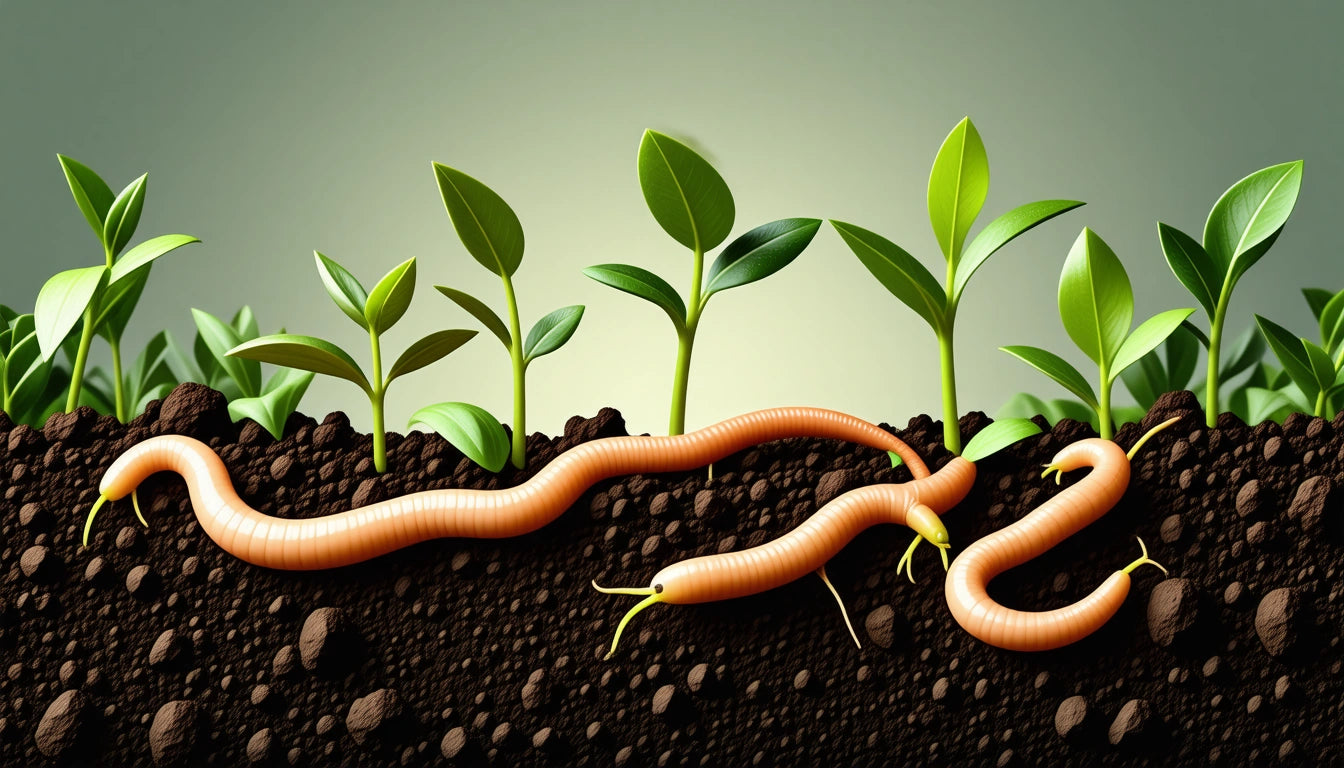Table of Contents
Why Seeds Emerge from Soil After Worm Fertilization
Gardeners and cannabis cultivators often notice seeds popping out of soil when worm fertilization occurs, a phenomenon that can be both puzzling and frustrating. This natural occurrence has biological and physical explanations rooted in soil dynamics and worm behavior. Understanding why this happens and how to manage it can significantly improve germination success rates and seedling development.
Understanding Worm Fertilization and Soil Dynamics
Worm fertilization, primarily through worm castings, introduces valuable nutrients and beneficial microorganisms to the soil. Worm castings provide numerous benefits including improved soil structure, enhanced water retention, and slow-release nutrients that boost plant growth.
When worms process organic matter, they create tunnels and movement patterns that physically alter the soil structure. This activity, while beneficial for soil aeration and drainage, can sometimes disrupt recently planted seeds, causing them to emerge from their carefully placed positions.
Why Seeds Pop Out of Soil During Worm Activity
Physical Displacement Mechanisms
Several mechanisms contribute to seeds popping out of soil when worm fertilization occurs:
- Burrowing Activity: As worms tunnel through soil, they push material upward and outward, potentially carrying seeds to the surface.
- Casting Accumulation: Worm castings deposited on the soil surface can gradually elevate seeds that were initially just below the surface.
- Soil Structure Changes: Worms alter soil density and structure, creating pathways that may allow seeds to shift position.
These physical disturbances are more pronounced in loose, freshly prepared soil where seeds haven't yet established root systems to anchor themselves.
Timing and Seed Vulnerability
Seeds are most vulnerable to displacement during the pre-germination phase when they lack roots to secure their position. Understanding germinated seeds and their development stages can help cultivators time their worm fertilization to minimize disruption.
Preventing Seed Displacement in Worm-Rich Environments
To minimize seed displacement while still benefiting from worm activity, consider these strategies:
Timing Your Fertilization
- Apply worm castings 1-2 weeks before planting seeds to allow initial worm activity to stabilize.
- Alternatively, wait until seedlings have developed their first true leaves and established initial root systems before introducing additional worm castings.
Proper application timing can significantly reduce the chances of seeds popping out of soil when worms fertilize the growing medium. Determining the optimal amount of worm castings is equally important to prevent excessive worm activity.
Planting Depth Considerations
Planting seeds at the appropriate depth can help counter the displacement effect:
- Plant seeds slightly deeper than normally recommended if using worm-rich soil.
- Consider a light covering of fine vermiculite or sand over the seed bed to create a barrier that worms are less likely to disrupt.
For precision planting and monitoring seed development, many growers use accurate digital scales to measure seed quantities and soil amendments, ensuring consistent results across multiple growing cycles.
Benefits of Worm Activity Despite Seed Displacement
Despite the potential for seed displacement, worm activity offers substantial benefits that outweigh this temporary inconvenience:
- Enhanced Nutrient Availability: Worm castings make nutrients more bioavailable to developing seedlings.
- Improved Soil Structure: Worm tunnels create pathways for root growth and water penetration.
- Microbial Activity: Beneficial microorganisms in worm castings help suppress pathogens that can cause damping off and other seedling diseases.
These benefits contribute to stronger seedling development once the initial germination phase is complete. Preventing seedlings from falling over becomes easier in worm-enriched soil due to improved structural support.
Monitoring and Solutions for Optimal Seed Development
For growers experiencing persistent issues with seeds popping out of soil when worm fertilization occurs, several monitoring approaches and solutions can help:
Observation and Intervention Strategies
- Check newly planted seed beds daily for any signs of displacement.
- Gently reposition exposed seeds and cover with a thin layer of soil.
- Consider using seedling trays with individual cells for initial germination before transplanting to worm-rich soil.
Many commercial growers implement a two-phase approach: starting seeds in a controlled, worm-free medium before transplanting established seedlings to beds enriched with worm castings. This approach leverages the benefits of both seeds and seedlings while minimizing displacement risks.
Balancing Worm Activity with Seed Stability
Finding the right balance between beneficial worm activity and seed stability is key to successful cultivation:
- Use worm castings as a side dressing for newly planted seed rows rather than mixing throughout the soil.
- Consider vermicompost tea as an alternative that provides nutrients without the physical soil disruption.
- Create designated worm-rich zones in your garden separated from seed-starting areas.
By implementing these strategies, growers can minimize seed displacement while still benefiting from the valuable soil improvements that worms provide. Comprehensive seed planting techniques combined with strategic worm management create optimal growing conditions for cannabis and other valuable crops.
Future Directions in Worm-Based Cultivation Practices
As sustainable and organic growing practices continue to evolve, new approaches to integrating worm fertilization with seed planting are emerging. Layered growing systems, specialized seed-starting mediums, and timed-release worm casting products offer promising solutions to the seed displacement challenge while maximizing the benefits of worm activity in the soil ecosystem.
By understanding why seeds pop out of soil when worm fertilization occurs and implementing targeted management strategies, cultivators can harness the full potential of worm castings while ensuring successful germination and robust seedling development.











Leave a comment
All comments are moderated before being published.
This site is protected by hCaptcha and the hCaptcha Privacy Policy and Terms of Service apply.